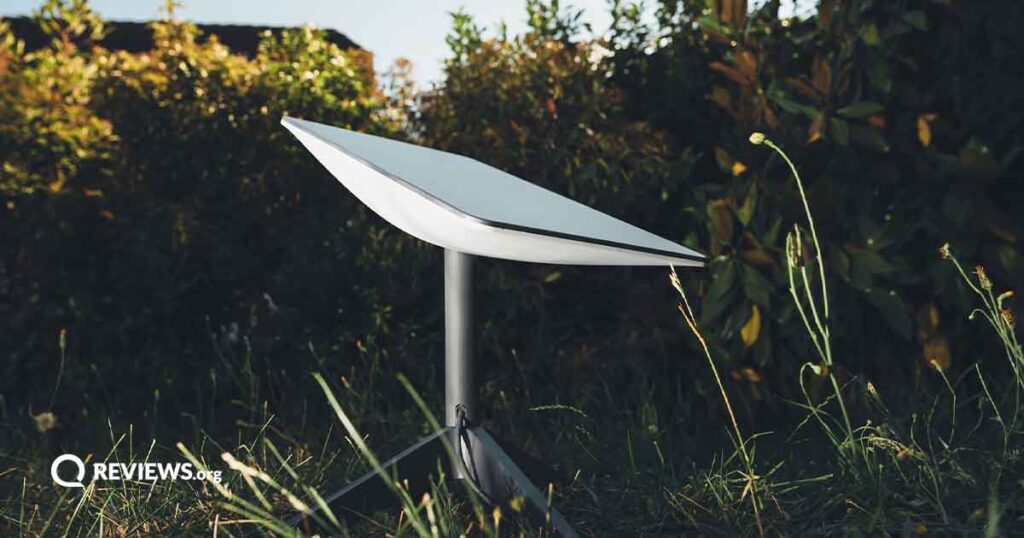Internet access in your pocket
What Are Hotspots and How Do They Work?
Wi-Fi hotspots are portable internet connections that you can bring anywhere you have a working cell phone signal. Every modern smartphone comes with built-in hotspot and tethering capabilities, but you can also find stand-alone mobile hotspot devices that broadcast an internet connection.
Coming from someone who spent much of the past several years working remotely, mobile hotspots have allowed me to work just about anywhere. This article will give you the basics about how hotspots work, how much personal hotspots cost, and how to set up your mobile hotspot.
Quick guide to this article:
What is a mobile hotspot?
A hotspot is a wireless internet access point that devices like phones, computers, and tablets can connect to. In other words: a portable Wi-Fi hotspot connection that you can carry in your pocket. Along with mobile hotspots cast from your cell phone, you can also find public Wi-Fi hotspots (like at McDonald's or Starbucks) that work the same way.
Hotspots speeds can technically reach up to 1,000Mbps, but you’ll probably experience data speeds slower than that. You also won’t usually find unlimited hotspot connections, so mobile hotspots don’t make much sense for replacing your home internet altogether. Mobile hotspots generally give you a monthly limit or throttle your speeds when you pass a certain data threshold Currently, the closest thing we have to an unlimited high-speed hotspot is the Unlimited Ultimate plan from Verizon that gives its users 60GB of designated hotspot data every month.
Mobile hotspots can’t quite replace home internet (yet), so for now, mobile hotspots really shine as a backup internet connection when the service goes out or if you need an internet connection on the go.
Some hotspot terminology
Here's a quick overview of some terminology you should know before we go too deep into the weeds of mobile hotspots:
Wireless internet (Wi-Fi): In short, a wireless internet connection. Wi-Fi isn’t a stand-alone internet connection. Rather, it’s a term that refers to an internet signal transmitting through devices such as routers or hotspots.
Cellular network: An interconnected system of computers, towers, and transmitters that transfer internet data through radio waves, which enables hotspots to work.
Hotspot device: A device that provides access to a Wi-Fi connection. Hotspot technology is built into most smartphones, but you can also use standalone hotspot devices. Hotspots require a cellular internet connection to function.
Tethering: This term refers to connecting one device with an internet connection (usually a smartphone) to a device that doesn’t have a connection. This can be done using Bluetooth, a USB cord, a Wi-Fi network, or other means.
Wireless local-area network (WLAN): A network of devices (including computers, smartphones, printers, and televisions) connected wirelessly through a combination of radio and cellular signals. A hotspot creates a WLAN, which gives Wi-Fi access to your connected devices.
Cellular data: Digital information transmitted over a cellular network. Internet access relies on data, which is why you pay for a data plan when you sign up for a cell phone plan.
Service set identifier (SSID): A unique combination of numbers and letters that serves as the name for a Wi-Fi network. Essentially, it’s the name of your personal hotspot connection.
If you’re currently using a hotspot connection to read this article, you can take our speed test to see what kind of performance you’re getting. Mobile hotspot speeds depend largely on your location, so you may get different results from the speed tests depending on where you take the test.
How does a mobile hotspot work?
A Wi-Fi hotspot takes your cell phone’s internet connection and turns it into an internet access point that other Wi-Fi enabled devices can access.
The data speeds you get with your personal hotspot depends on if you have a 4G LTE or 5G internet connection on your phone. If you have a 4G LTE connection on your phone, your best case scenario is around 30Mbps, which gives you enough bandwidth to host a Zoom meeting and stream music (just probably not at the same time). A 5G mobile hotspot can reach much higher speeds (even gigabit speeds), which allows you to stream, game, and work as much as you want. Just be warned that you’ll burn through your hotspot data allotment quickly with all that internet use.
Hotspots don’t work without cell service, so you’re out of luck if you can’t get a signal. If you see yourself using a mobile hotspot consistently, you’ll want to choose a cell phone provider with excellent coverage.
How fast are Wi-Fi hotspots?
A typical 4G LTE hotspot will hit speeds between 30 and 40Mbps, but your speeds depend largely on your cell phone coverage and your location. You might get a solid 35Mbps download speed using your mobile hotspot at one local park, and you might find that you get 5Mbps at another park on the other side of town.
5G hotspots, on the other hand, can consistently get you data speeds of at least 50Mbps, and potentially speeds up to 1,000Mbps. But even with a 5G mobile hotspot, you can experience lower speeds due to signal interference. If you’re too far away from the nearest 5G tower, like in the mountains or canyons, you might get a much slower connection (or no connection at all).
Types of mobile hotspots
Cell phone hotspots
The easiest and most common type of hotspot comes from your cell phone. If you’ve gotten a new smartphone in the past five or so years, your phone automatically comes with built-in hotspot capabilities.
While it would certainly be nice if we could just translate our unlimited cell phone plan into unlimited hotspot data, the reality is that cell phone plans come with a designated allotment of hotspot data every month. Once you pass that allotment, your hotspot data speeds will slow down so significantly that your hotspot basically becomes useless. The moral of the story is that you’ve got to sign up for a cell phone plan with generous hotspot data allotments if you want to use a mobile hotspot consistently.
How do you turn on your phone’s hotspot?
Turning on a phone’s hotspot is simple. Here’s a quick breakdown turning on your mobile hotspot for Apple and Android phones:
Apple iOS phones and tablets:
Step 1: Go to Settings > Personal Hotspot. Or, if you have an older iPhone, go to Settings > Cellular > Personal Hotspot.
Step 2: Tap to toggle on the Personal Hotspot switch.
Step 3: Switch on Allow Others to Join.
Step 4: Change the name of your hotspot, and set a password.
Android phones and tablets:
Step 1: Open your Settings and search for “hotspot” or “tethering.” Look for a Mobile Hotspot and Tethering or Network and Internet option.
Step 2: Enable your hotspot.
Step 3: You might need to switch on Wi-Fi sharing in your settings, which allows you to access the hotspot on different devices.
After you’ve enabled the hotspot on your mobile device, you can hop over to your Wi-Fi enabled device and connect to your mobile hotspot. Look for the SSID (name of your Wi-Fi hotspot) and enter the password you created. Wait a few seconds and you should have internet connection on your device!
Stand-alone mobile hotspot devices (5G and 4G LTE)
If you don’t want to use your phone to create a hotspot, you can purchase a dedicated hotspot device. These devices typically cost more than a phone hotspot, but can cast a much wider net with a more reliable internet connection. You’ll need to pay for a data plan on top of the price for the device, but you can get a better bang for your buck from a data standpoint compared to a cell phone plan.
Depending on if you get a 4G or 5G stand-alone hotspot device, your data speeds will usually fall between 25–30Mbps or 50–1,000Mbps.
Best designated mobile hotspot devices
Hotspot FAQs
You can change your hotspot Wi-Fi name on the same screen you used to turn on your mobile hotspot. Here’s a refresher:
Apple iOS phones and tablets:
Step 1: Go to Settings > Personal Hotspot. Or, if you have an older iPhone, go to Settings > Cellular > Personal Hotspot.
Step 2: Tap to toggle on the Personal Hotspot switch.
Step 3: Switch on Allow Others to Join.
Step 4: Change the name of your hotspot, and set a password.
Android phones and tablets:
Step 1: Open your Settings and search for “hotspot” or “tethering.” Look for a Mobile Hotspot and Tethering or Network and Internet option.
Step 2: Enable your hotspot.
Step 3: Change the name of your hotspot, and set a password.
You will generally pay more for cell phone plans with more hotspot data. While most unlimited cell phone plans come with an allotment of hotspot data, you’ll need to pay more for additional hotspot data.
When you use your personal hotspot, your phone pulls data from the hotspot allotment that comes with your cell phone plan. If your cell phone plan doesn’t come with any high-speed hotspot data, your hotspot data will default to slow 3G speeds.
Related Articles



